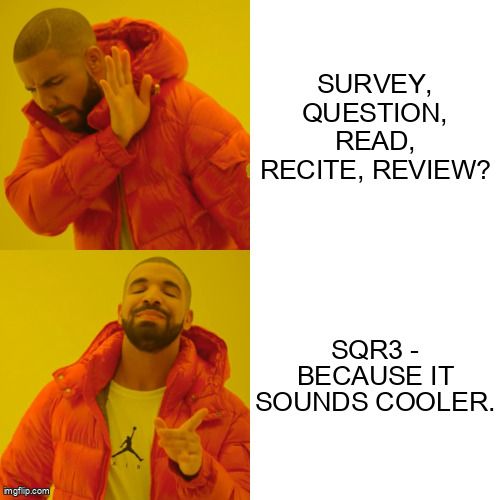Starting post-secondary school comes with lots of learning curves: new teachers, different expectations, new roommates, and maybe even a new city or apartment.
There are plenty of changes ahead, from new friend to new classes, and — you guessed it —new class expectations!

There are a lot of things that may cause you stress in this transition, but course readings shouldn't be one of them!
It's time to survive and thrive with these 3 practical tips that can help you stay on top of your course readings.
Did you know?
The average student spends 12-15 hours outside of class time doing homework and readings.
1. Prioritize
It might seem overwhelming, but the key to staying on top of your readings is simple: prioritize! Ideally, this starts in the first week of your term when you receive your syllabi for each class.
To help you prioritize, consider making 2 calendars:
A weekly calendar with priorities you know are recurring (i.e. classes, work schedules, etc.) This helps you break readings down into bite-sized chunks and makes the process less overwhelming.
A four-month semester calendar with paper deadlines, test dates, and anything you needed to complete for the term. This calendar can include important deadlines and decide when you want to start reviewing your course readings for things like midterms!
 Photo by airfocus on Unsplash
Photo by airfocus on UnsplashPrioritizing doesn't have to be complicated. Choose one or two tools that work for you and build from there. For readings, this can be as simple as writing out what you need to read and when.
For more great tips on how to prioritize, check out this Byte on different time management tools.
Did you know?
The author of this Byte is an instructor who once taught Study Skills 101.
2. Time Block for Better Focus
Time blockingis a practice that helps you to prioritize and dedicate specific times to a specific task. Focusing on a single task or reading helps you absorb more information and remember it better.
Before you begin, look at your syllabus for each class and weigh out the number of readings you have in the average week.
For each set of readings, find space in the schedule to block out dedicated focus time.
Reviewing your syllabi helps you prioritize important readings and what to review (think readings before and after midterms). It also keeps you accountable — you can stay on top of your class readings more easily when they're scheduled for you!
 Photo by Chase Clark on Unsplash
Photo by Chase Clark on UnsplashQuiz: Let's Help Charles
Charles is a new student who started his Bachelor of Science in Chemistry this year. He is nervous about managing all of his course readings alongside his labs and other work commitments. Take a look at his schedule below and help him balance his readings.
Things to keep in mind:
Charles has a Chemistry 101 lab this week with a report due next week
Physics 100 will have an open-book quiz next class
Psychology 101 has a mini assignment due in two weeks.

Today's Classes
9am Chemistry 101
12pm Physics 100
4pm Psychology 101

This Week's Readings
Chemical Bonding & Atomic Structure (Chapters 1-3)
Electromagnetism, Heat and Motion (Chapter 4 - 6)
Perception & Sensation (Chapter 1), Decision Making & Emotions (Chapter 3)
Quiz
How should Charles prioritize his readings? Select all answers that apply:
Subscribe for more quick bites of learning delivered to your inbox.
Unsubscribe anytime. No spam. 🙂
Benefits of Time Blocking

Time blocking is more than just a buzzword. It has many benefits that can help you stay focused and control your course readings.
It promotes "deep work". Deep work is the time and space available for doing your best and most focused work. It gives you the ability to create high-quality work quickly and efficiently.
You'll be more aware of how you spend your time. One of the main benefits of time blocking comes from an awareness of how you spend your time. For each new commitment that you add, you must find space on your calendar.
It rewires your brain. According to research from the American Psychological Association, focusing on single tasks and time blocking can literally rewire your brain and create new neural pathways.
3. Try SQR3 (AKA: Survey, Question, Read, Recite, Review)
SQR3 might sound a lot like algebra or something out of a Star Wars movie, but it's a learning method that involves a 5-step process.

Step 1: Survey 🔎
Get an overall idea of the text you are reading. Look at headings, subheadings, as well as any important graphs, tables, or summary paragraphs.
Step 2: Question ❓
Generate questions you might have about the text from your scan in the previous step. These can be general (e.g. "What is this section describing?") or more specific and targeted at specific subheadings you saw in your surveying.
Step 3: Read 📖
The fun begins — start reading! Use the questions you generated in the previous step to be alert for specific information that stands out to you as important to help create an active reading process.
Step 4: Recite 🗣️
Describe what you just read. You can do this out loud, like talking to a friend or study buddy, or you might choose to write a summary of the text in your own words.
Step 5: Review 🔁
After you have read the material, revisit your notes. Take a look through to see if anything stands out to you in particular. Assess how effectively you remembered the main points of the content.
Quiz
Raj is overwhelmed by his course readings for English literature. What should he do first?
Take Action
 Photo by Brett Jordan on Unsplash
Photo by Brett Jordan on UnsplashThe first few weeks of post-secondary school will be packed with information. Be gentle with yourself as you take it all in and be sure to practice self-compassion.
Your feedback matters to us.
This Byte helped me better understand the topic.
New Bytes
We publish fresh Bytes daily, we can send you a notification when that happens.
